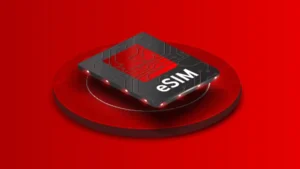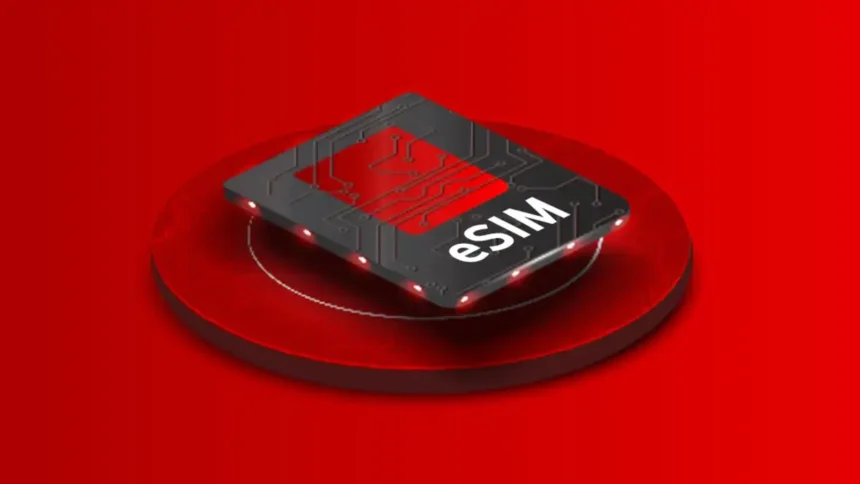Introduction
The tiny Jio SIM card has been a vital component of mobile connectivity for decades. Traditionally, it came in the form of a physical SIM. While physical SIMs are inserted into your device and then removed, eSIMs are embedded directly into your device. They can be activated digitally through a QR code — eliminating the need for insertion or removal.
This transition is more important than ever to today’s consumers who want more convenience, improved security, and access to multiple numbers on a single phone. It’s particularly convenient for frequent flyers, smartwatch users, and individuals who need to manage both personal and work numbers.
Reliance Jio, India’s leading telecommunications provider, supports both physical SIMs and Jio eSIM across a wide range of devices. Whether you own an iPhone, Samsung Galaxy, Pixel, or even a wearable such as the Apple Watch or Galaxy Watch, Jio makes easy activation and connection with either SIM possible. So, you might be wondering which choice is best for your lifestyle — this guide will assist you.
What is a Physical SIM?
A Physical SIM is a device that connects your mobile device to your mobile service provider’s network. It has a small chip that securely stores your mobile number, network credentials, contacts, and other important information.
For a long time, the physical SIM card has been the norm for mobile activation. When you purchase a new Jio SIM, say, you physically place the card inside your phone’s SIM tray. After activation, your phone gets connected to the Jio network, enabling you to make calls, send messages, and use mobile data.
It is convenient to use, particularly for those who switch phones often or want a physical means of controlling their mobile identity.
How It Works
Your International Mobile Subscriber Identity (IMSI) is stored in the SIM card.
One of the greatest strengths of a physical SIM is its cross-compatibility:
- Compatible with nearly all smartphones, feature phones, and even some tablets and dongles.
- No software support worries or QR scanning — insert and activate.
- Ideal for users with devices or those running unsupported operating systems.
The physical SIM is a proven technology that’s easy to use, extremely compatible, and still the default for millions of users in India and globally.
What is an eSIM?
An eSIM, also known as an embedded SIM, is the future of SIM technology. Unlike a regular SIM card, an eSIM is integrated directly into your phone or device—no physical card to insert or remove. Your mobile number and plan are activated electronically instead.

The name “eSIM” is short for Embedded Subscriber Identity Module. It’s a small chip that’s permanently inserted into your phone’s motherboard during the manufacturing process. Instead of replacing SIM cards, customers can download and activate a SIM profile using software, making the process fully digital and easy to use.
How It Works
- When you order an eSIM from Jio, it is typically located in Mobile Data or SIM management settings.
- The Jio profile is downloaded and installed directly on your device.
- No need to touch or plug anything in.
This enables users to:
- Enable their Jio connection remotely (no store visit required).
- Flip between multiple eSIM profiles when necessary.
- Utilise dual SIM capability (e.g., one eSIM + one physical SIM).
- The entire process takes only a few minutes, and there is no risk of breaking or misplacing a small plastic card.
Supported Devices
Most contemporary smartphones and smartwatches support eSIM technology. Here are some common examples:
Smartphones Such as:
- iPhone series
- Samsung Galaxy S20 and later, Z Flip/Fold series, Note20 series
- Google Pixel 3 and later
- Motorola Razr (eSIM variants)
- Nothing Phone (1) and (2)
- Smartwatches & Tablets:
- Apple Watch Series 3 and later (Cellular)
- Samsung Galaxy Watch 4 and later
- iPad Pro, iPad Air (eSIM models)
Side-by-Side Comparison Table.
| Feature | Jio eSIM | Physical SIM |
| Form Factor | Built-in chip, no removable card | Small plastic card inserted into SIM tray |
| Device Compatibility | Only works on eSIM-supported devices (newer iPhones, Samsung, Pixel, etc.) | Works on almost all phones (basic, feature, and smartphones) |
| Setup & Activation | Digital activation via QR code, no physical handling | Requires physical insertion and manual activation |
| Switching Phones | Requires a new QR activation on the new device | Just remove the SIM and insert into another phone |
| Security | More secure — cannot be removed or stolen easily if phone is lost | Can be physically removed, cloned, or misplaced |
| SIM Slot Usage | Frees up the physical SIM slot for dual SIM usage | Occupies a SIM slot, limiting dual SIM capability on some devices |
| Durability | No wear and tear, not prone to physical damage | Can get scratched, broken, or damaged over time |
Device Compatibility
- Only works on eSIM-supported devices (newer iPhones, Samsung, Pixel, etc.)
- Works on almost all phones (basic, feature, and smartphones)
Setup & Activation
- Digital activation via QR code, no physical handling
- Requires physical insertion and manual activation
Switching Phones
- Requires a new QR activation on the new device
- Just remove the SIM and insert it into another phone
- More secure — cannot be removed or stolen easily if the phone is lost
- Can be physically removed, cloned, or misplaced
SIM Slot Usage
- Frees up the physical SIM slot for dual SIM usage
- Occupies a SIM slot, limiting dual SIM capability on some devices
Durability
- No wear and tear, not prone to physical damage
- Can get scratched, broken, or damaged over time
This table clearly shows that while physical SIMs are more flexible, eSIMs offer better security and convenience—especially for tech-savvy users with newer devices.
Pros and Cons
eSIM: Benefits
- No physical handling is necessary – it’s activated digitally through a QR code.
- Safer – As there is no physical card that can be stolen or duplicated, it is safer in the event of theft or loss.
- Releases SIM slot – You can use one physical SIM and one eSIM for dual-SIM functionality.
- Long-lasting – Cannot be lost, bent, or harmed.
- Suitable for wearables – Compatible with smartwatches, tablets, and IoT devices.
eSIM: Disadvantages
- Limited support for devices – Available only on select smartphones and wearables.
- Less convenient when changing devices – You have to scan a fresh QR code each time you change phones.
- Setup may require internet connectivity – Not suitable in areas with poor connectivity during activation.
Physical SIM: Advantages
- Interoperability – Compatible with nearly any mobile phone and device.
- Simple to transfer between phones – take it out and put it into a new device.
- No digital expertise required – Ideal for users who prefer physical management of their mobile connection.
Physical SIM: Disadvantages
- Vulnerable to damage or loss – SIMs can easily bend, scratch, or get lost.
- Takes up device space – Restricts dual-SIM usage if only one slot is supported.
- Can be stolen or abused if lost – Less secure than eSIM in the event of a phone theft.
Ideal Use Cases
Who Should Opt for eSIM?
- Users of eSIM-compatible phones (i.e., iPhone, Samsung Galaxy, Pixel)
- Individuals who like digital activation and fewer physical components
- Regular tourists who alternate between local and foreign plans
- Professionals operating dual SIMs for business and personal life.
- Individuals with smartwatches, tablets, or IoT devices that require mobile data
Who Should Use a Physical SIM?
- Users of old phones or feature phones
- Individuals who constantly change phones and desire a plug-and-play solution
- Those who are less at ease with QR codes or digital installation
- Users who have limited internet access in their area for activation
How to Switch Between eSIM and Physical SIM
For Apple, Samsung & Pixel Phones
SMS Activation:
- Send GETESIM <32-digit EID> <15-digit IMEI> to 199 using the device with your Jio SIM.
- (You can locate EID & IMEI under Settings > About Phone > Status)
Confirmation SMS:
Jio will send a confirmation SMS and a QR code link.
Scan QR Code:
- Go to Mobile Data or SIM Card settings on your phone
- Choose Add eSIM or Use QR Code
- Scan the Jio-sent QR code to activate eSIM
eSIM Profile Installation:
- Jio profile will download and get activated in minutes.
- Restart Your Phone
- After that, restart your phone to make changes.
Reverting to a Physical SIM from eSIM
When switching to a non-eSIM phone:
- Go to a Jio Store or Jio Retailer
- Bring your original ID proof and device with the existing eSIM.
- Request a SIM replacement.
- Do KYC (if asked for)
- The store will authenticate your identity.
- Get a Physical SIM
- A new physical SIM will be provided with your existing number.
- Wait for Activation
- The new SIM is typically activated in 4 hours.
Jio Support Channels
- In case you have any issues while switching or need help:
- Dial JioCare: 198 or 199 from your Jio number
- Live Chat on MyJio App
- Go to www.jio.com
- Check with Jio Stores and Jio Retailers around you.
Common Myths and Misconceptions
Myth 1: eSIM is Less Secure than a Physical SIM
It can’t be pulled out, cloned, or abused if your phone is stolen, unlike a physical SIM, because it’s physically inside the device and secured by phone-level authentication (such as Face ID or fingerprint).
Myth 2: Physical SIM is Now Obsolete
eSIM is a step ahead in mobile technology, but physical SIMs remain highly relevant. The majority of low-cost and mid-range phones in India don’t have eSIM support, and the vast majority still appreciate the ease of plug-and-play. Jio still completely supports physical SIMs, so they remain an easy and convenient option, particularly in rural regions.
Myth 3: eSIM Won’t Work Without Internet
You require an internet connection at the time of initial activation to download your Jio eSIM profile through QR code. Post-activation, the eSIM behaves like a regular SIM — it roams on mobile networks without Wi-Fi. After installation, you can continue to make calls, access mobile data, and receive SMS messages as usual, even when offline.
Conclusion
Deciding between an eSIM from Jio and a physical SIM ultimately comes down to your device, lifestyle, and personal preferences. With a new-generation smartphone, appreciating the convenience of digital life, and wanting to avoid the hassle of dealing with a physical card, eSIM is a pragmatic, secure, and future-proof option.
If you frequently change phones, have a non-eSIM device, or simply prefer a physical SIM that you can physically insert and manage, the physical SIM works just as well. Jio handles both options smoothly, so you can choose whichever works best for you — or even use both simultaneously if your phone supports dual SIM compatibility.
FAQs
- Is eSIM activation free with Jio?
Yes, Jio provides free eSIM activation and conversion services for both prepaid and postpaid customers.
- How to check if my phone supports eSIM?
Verify device settings in Mobile Network > Add eSIM or check your phone’s official webpage. eSIM is typically supported by iPhone XS and later models, Samsung Galaxy S20+ and later models, Google Pixel 3 and later models, and some smartwatches.
- What do I do if I factory reset my phone with an active eSIM?
The eSIM profile can be removed. To reactivate, rescan the QR code or contact Jio for a new one.
- Is eSIM usable offline after activation?
Yes, after activation, the eSIM is similar to a physical SIM. Only the internet is needed during setup/QR code scan time.
- Can I shift my eSIM to another phone?
Yes, but you’ll need to request a new QR code from Jio and have the eSIM activated on the new device. You can’t just “transfer” an eSIM as one would a physical SIM.
- Is eSIM safer than a physical SIM?
Yes, since it is built into the device and cannot be physically removed or cloned, it provides better security, particularly in the event of loss or theft.
- What if my phone is not eSIM compatible?
You can still use a physical Jio SIM, which is compatible with almost all phones, including basic feature phones.
- Is Jio eSIM international roaming enabled?
Yes, Jio eSIM does support international roaming, just like a physical SIM. You can install global roaming packs and use them internationally.
- Can I revert from eSIM to a physical SIM?
Yes, visit any Jio Store or authorised shop with your proof of identity and request a SIM replacement. Your number will be relocated back to a physical SIM.








